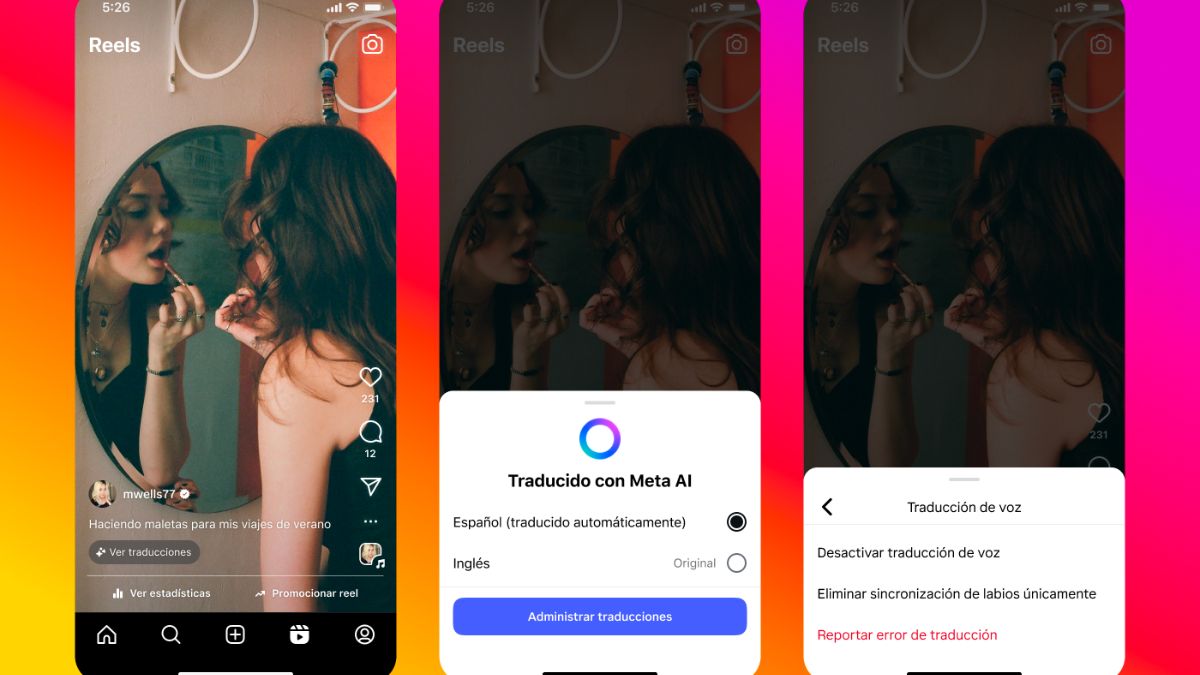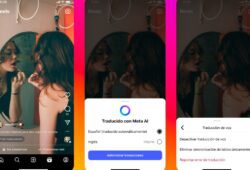
Meta has launched its new AI-powered voice translation tool on Facebook and Instagram, a feature designed to break language barriers in video content, particularly in Reels. Originally announced during the Connect 2024 event, this function aims to impact the ecosystem of creators who connect with international audiences.
READ ALSO. What is personal superintelligence? Mark Zuckerberg and Meta’s ambitious venture
What are Meta’s AI-powered voice translations?
The new Meta voice translation feature is powered by artificial intelligence and automatically translates the audio of a Reel not only into the viewer’s language, but also synchronizes the creator’s lip movements to offer a much more natural experience.
This AI system transforms the original language of the video into another compatible language (currently from English to Spanish and vice versa), maintaining the creator’s original voice tone and sound, ensuring the content feels authentic and true to its essence.
On which platforms are Meta’s voice translations available?
The feature has been rolled out on two of Meta’s most popular platforms: Instagram and Facebook, although with some differences:
- On Instagram, it’s available for all public accounts.
- On Facebook, it’s available to creators with 1,000 or more followers.
This tool is shaping up to be very useful in boosting the international reach of content, allowing Reels to be discovered by audiences who previously could not understand them.
READ ALSO. Meta surprises the market with earnings up 22% thanks to advertising
How to activate automatic translations on Reels?
Meta designed this tool to be easy to use and completely free. To enable the translation feature on Reels, follow these simple steps:
- Create your Reel as usual.
- Before publishing, select the languages you want to translate into.
- Review the translations generated by the AI.
- Choose whether to enable lip sync.
- Publish.
How does lip sync work on translated Reels?
One of the most innovative aspects is the optional lip sync, which adjusts the creator’s lip movements in the video to match the AI-generated voice translation. “Sincroniza las traducciones con el movimiento de tus labios para una experiencia de visualización fluida,” reported the company founded by Mark Zuckerberg.
This function is intended to make the translation not only sound natural, but also look natural, significantly improving the viewer experience and taking a big step beyond traditional translations.
How much control do creators and users have over translations?
Meta has worked to offer full control to both creators and viewers. Key features include:
- Turn the feature on or off at any time.
- Review and approve translations before publishing.
- Remove translations if you no longer want the content translated.
- Choose which languages to translate into.
- View a new metric in analytics showing which languages attract more views, helping guide more accurate content strategies.
Users, for their part, can also manage their preferences in language settings, and even opt out of receiving automatic translations for certain languages.
How to upload translated audio tracks to a Reel on Facebook?
For creators who want to use their own voice translations on Facebook, Meta has enabled an option within Business Suite:
- Go to the Reels composer.
- In the “Captions and translations” section, select “Upload your own translated audio tracks.”
- Upload up to 20 different tracks with their respective languages.
- You can edit, replace, or delete the tracks even after the Reel is published.
- Publish the Reel as usual.
AI translations on Meta: what languages are supported today?
Currently, AI-powered automatic translations are limited to Spanish and English, but Meta has confirmed that more languages will be added soon, which will further expand the global impact of this technology. “Planeamos incorporar más idiomas en el futuro”.










